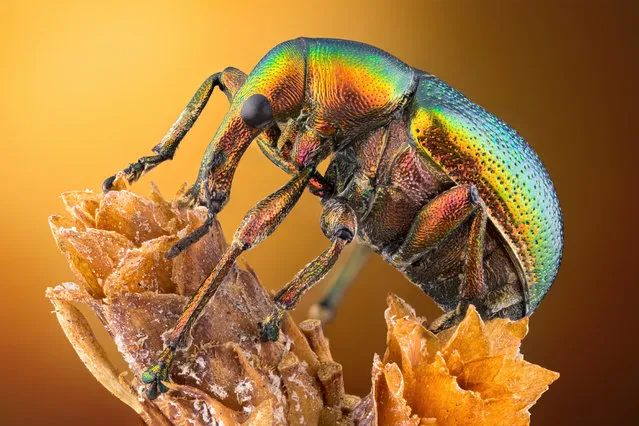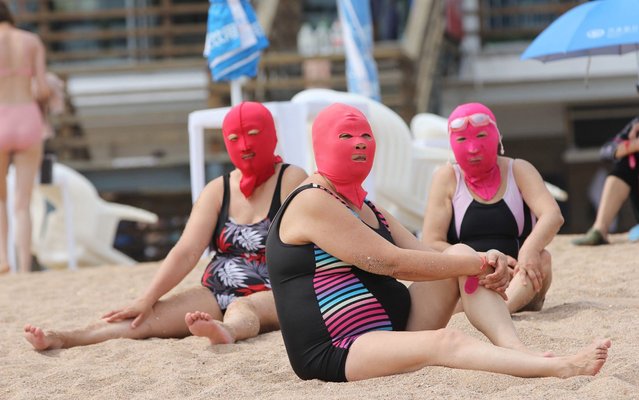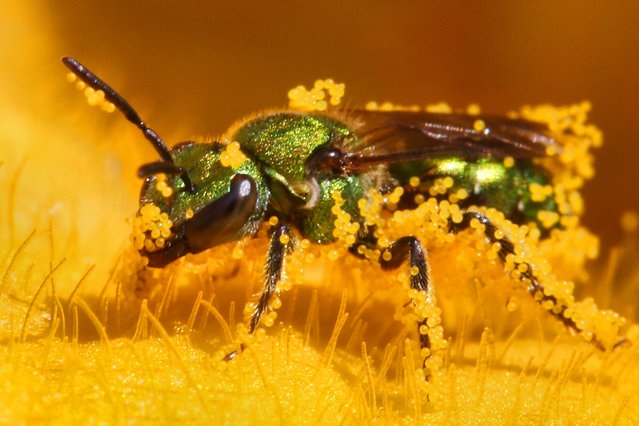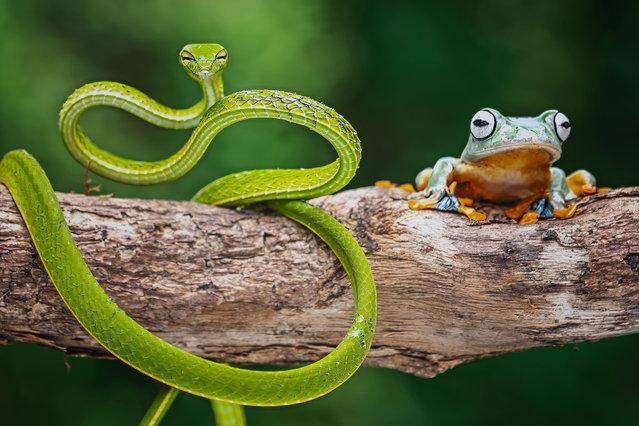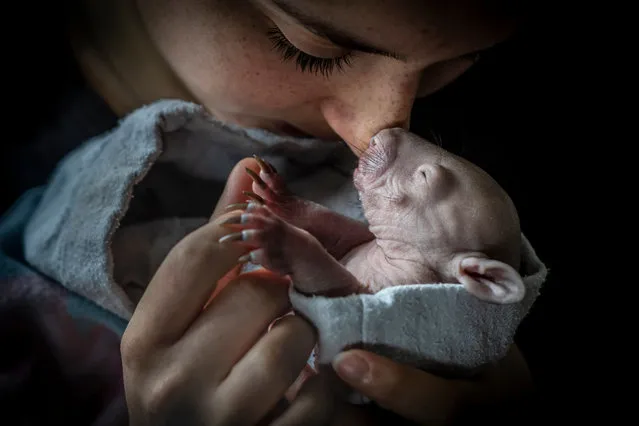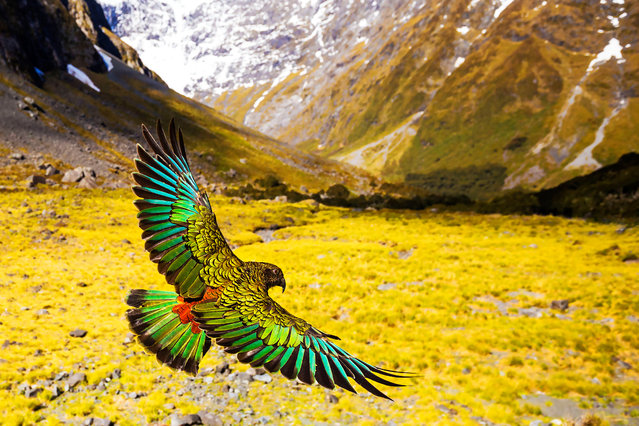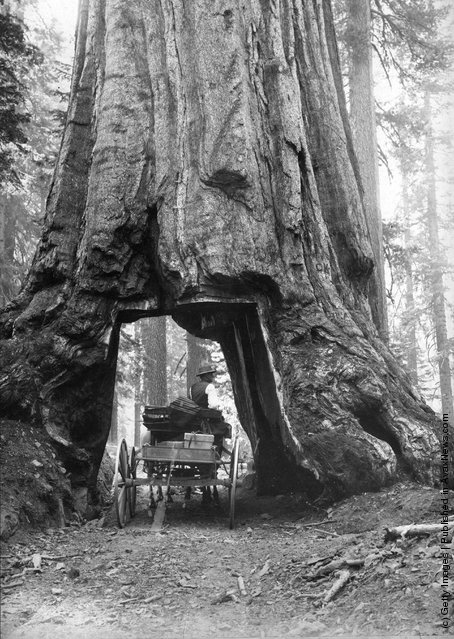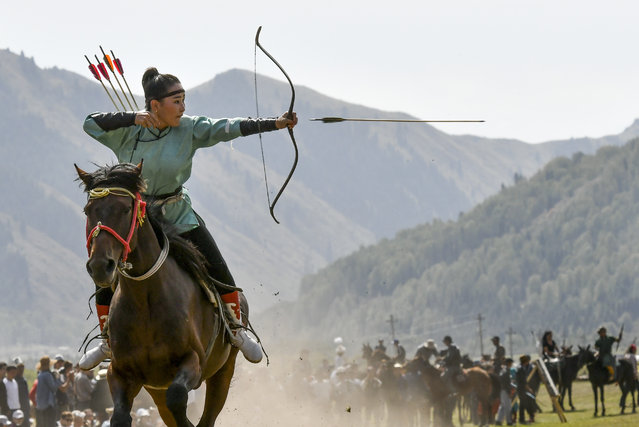
In this photo taken on Thursday, September 6, 2018, a women releases an arrow during an archery competition during the Third Nomad Games, in Cholpon-Ata, 250 kilometers (156 miles) of Bishkek, Kyrgyzstan. The Central Asian nation of Kyrgyzstan held its biennial Nomad Games to promote and celebrate traditional sports of nomadic people. The week-long competition, which is held in a gorge near the picturesque Lake Issyk-Kul, feature traditional sports of nomad peoples such as horseback wrestling and goat polo. (Photo by Vladimir Voronin/AP Photo)
